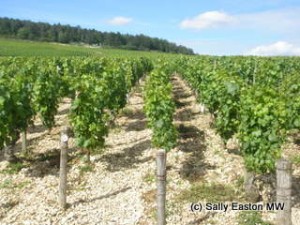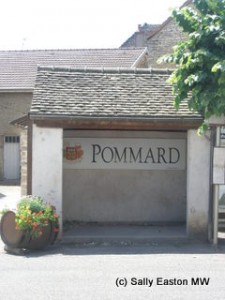French paradox – climats and lieux-dits

Grand Cru Chablis
A version of this article first appeared in the March/April 2012 issue of Winestate magazine.
French semantics are to the fore as we delve into the fog-bound world of attempting to differentiate between Burgundian ‘clos’, ‘climat’, ‘lieu-dit’, ‘cru’ and ‘appellation’. Some are easier; others require increasing magnitudes of microscopy, combined, perhaps, with a small gallic shrug for the inevitable French paradoxes.
Appellations are relatively easy, being delimited geographical areas codified from the 1930s. These are our basic units of measurement for Burgundy, and rank from basic Burgundy, up through village Burgundy, then premier cru then grand cru. ‘Cru’ is given a rough translation of ‘growth’, as there is no direct equivalent.
‘Clos’ is also easy, being a delimited geographical area bounded by physical walls. Indeed some ‘crus’ have been recognised as far back as the 7th century, for example Clos de Bèze in Gevrey-Chambertin. Given that much of early Bugundian viticulture was under the aegis of monks and dukes, adding a wall (clos) around a vineyard may have been common early practice.
It is ‘climat’ and ‘lieu-dit’ that are challenging even the Burgundians, especially as they progress their UNESCO application for world heritage site status.
These terms have evolved since the Middle Ages, as monks recognised one named vineyard parcel or plot or field as producing different-tasting wine (from the same grape) from a neighbouring parcel. In the Burgundian context, climat was being used to describe such parcels, so it is not derived from climate, or weather (as a French dictionary will suggest).
Cécile Mathiaud, spokesperson at the Burgundy Wine Board explained “there is no official definition for a climat. They come from history and from the evolution of vineyard parcels. The work of the monks meant that parcels were divided between different qualities.”
In more recent history, the field name of each lieu-dit has been documented since the creation of the land registry by Napoléon Bonaparte in 1807, so these parcels have been legally recognised plots of land for a couple of hundred years. Mathiaud added “at the time the land registry was created, climats already existed, so we can say it was both the names of the climats and the names of the lieux-dits that were registered” though lieu-dit is the official name for the land registry.
 The Burgundy Wine Board define a climat as “land with precisely defined limits, benefiting from specific geological and climatic conditions” … so delimited geographical areas. A lieu-dit is defined as “a geographical place with boundaries” … so also a delimited geographic area. Mmm.
The Burgundy Wine Board define a climat as “land with precisely defined limits, benefiting from specific geological and climatic conditions” … so delimited geographical areas. A lieu-dit is defined as “a geographical place with boundaries” … so also a delimited geographic area. Mmm.
It appears that over time, climat and lieu-dit have been used pretty much interchangeably, which means an amount of confusion is being created as the region now attempts to extricate one from the other. This is proving rather tricky, especially as one climat can contain several lieux-dits, for example within the grand cru Clos de Vougeot. Equally, and paradoxically, we are told, a climat may cover just part of one lieu-dit.
In broad terms, it was the climats that were effectively made into appellations in the 1930s, though not exclusively, so don’t use that a golden rule. Not all climats are classed as premier cru. Climats generally were better parcels, so these are the premier cru and grand cru appellations. More than 600 climats were made into premiers and grands crus. But there are more than 1,200 climats in Burgundy, so many are named plots in some village, or even regional, appellations. Champ de Perdrix, for example, is the name of the climat, (or lieu-dit?), of Domaine Jean-Pierre Charton’s Bourgogne Pinot noir.
Given that appellations, specifically premier crus, can extend over a couple of hundred of metres of altitude, with fractionally differing aspects, gradient and exposures, it is reasonable to deduce that different bits of an appellation perform differently, and may therefore have parcellated names. So one appellation may have several climats (or lieux-dits?) within it.
The Burgundy Wine Board is moving to suggest that the climat be used for premier and grand crus. These are the names found in the appellation declaration, certified by INAO (the government body that controls appellations). And the term lieux-dits be used for regional and village appellations – named parcels in these appellations are “not officially written in the INAO documents, but recognised according to custom and tasting” said Mathiaud.
On the surface this leaves those other 600 climats, not made into premier and grand cru, subject to a name change to lieux-dits. Perhaps there is still some disentangling still to be done.



